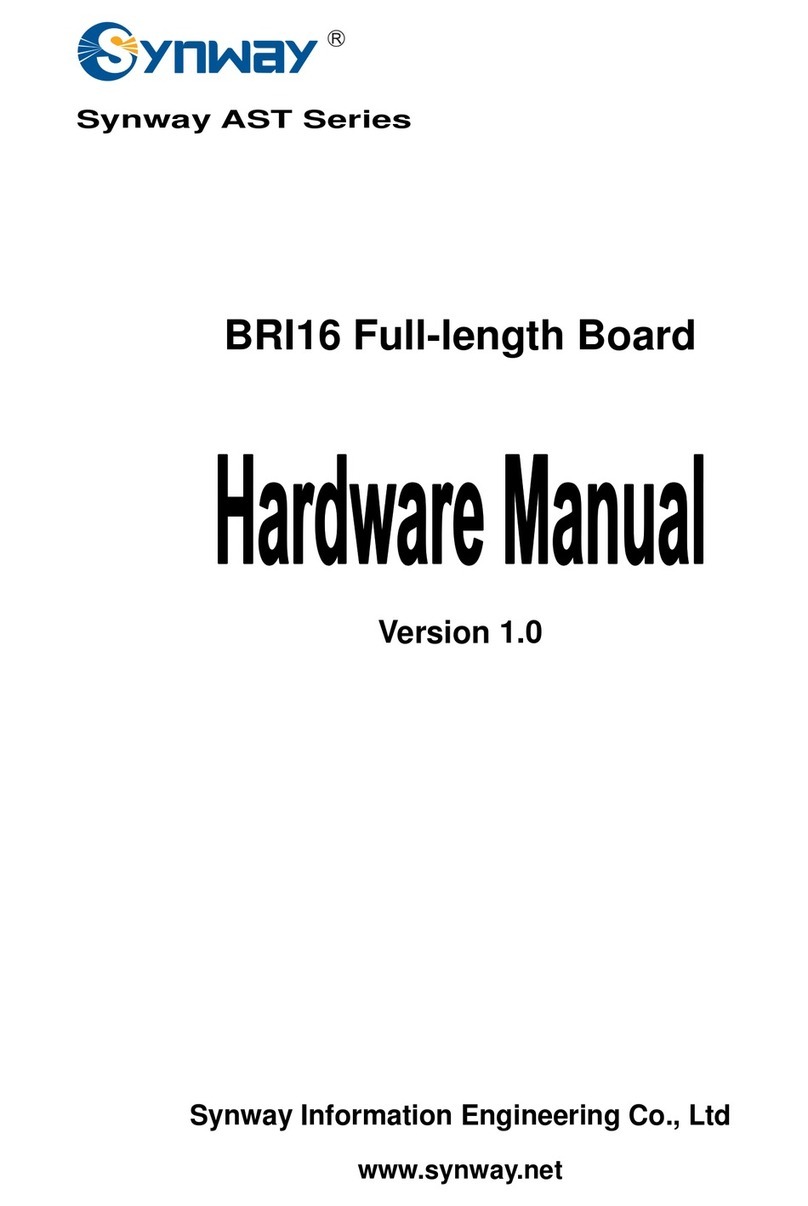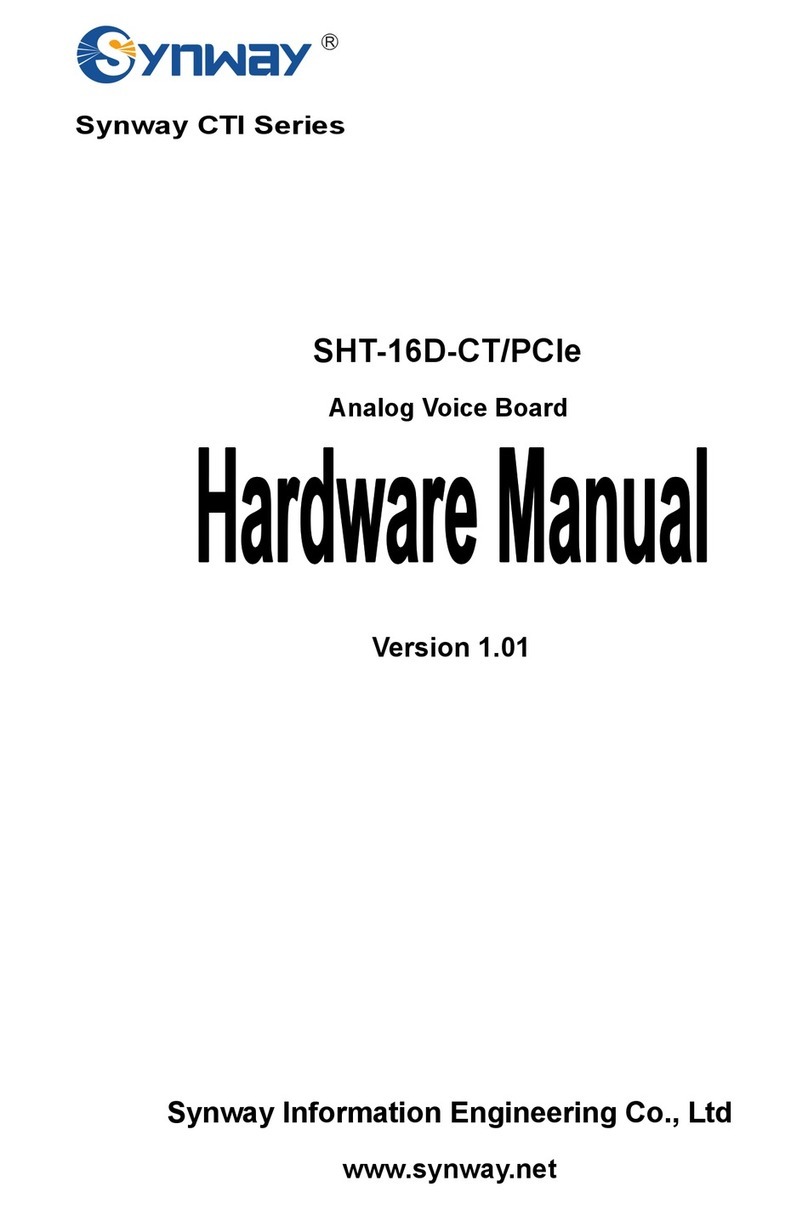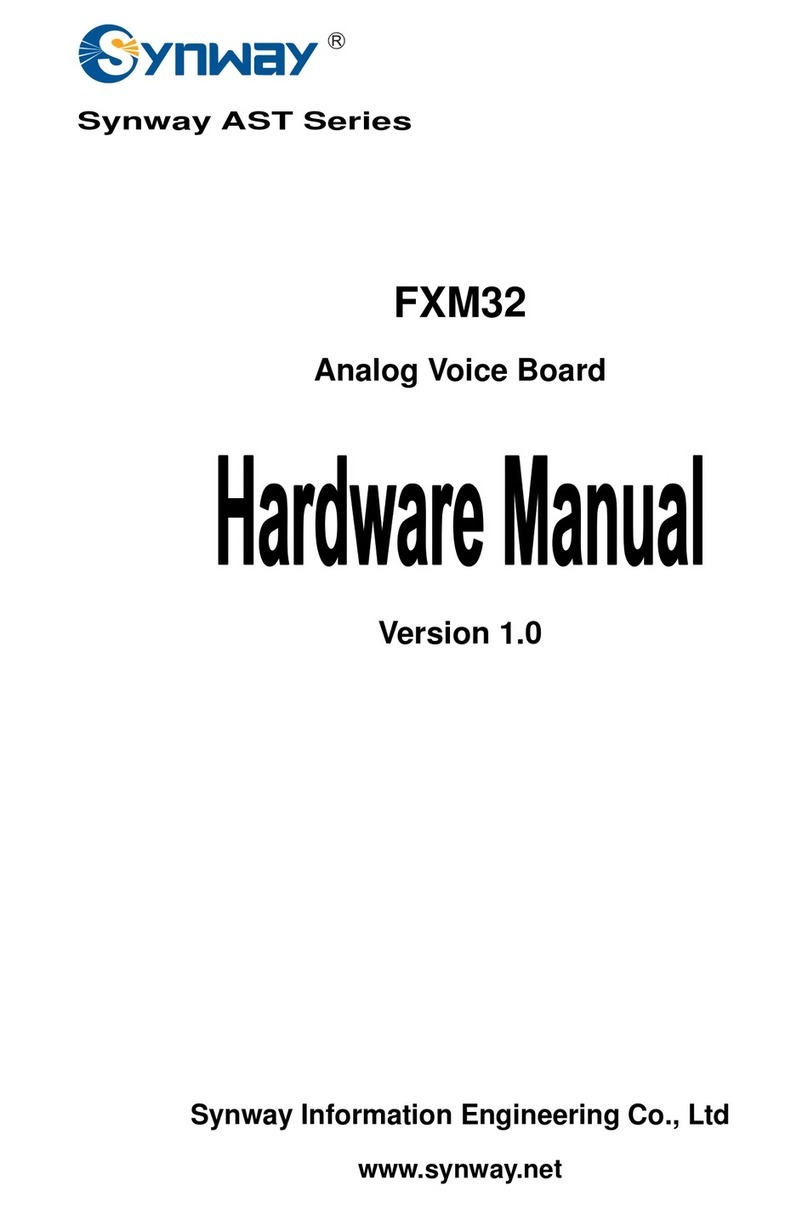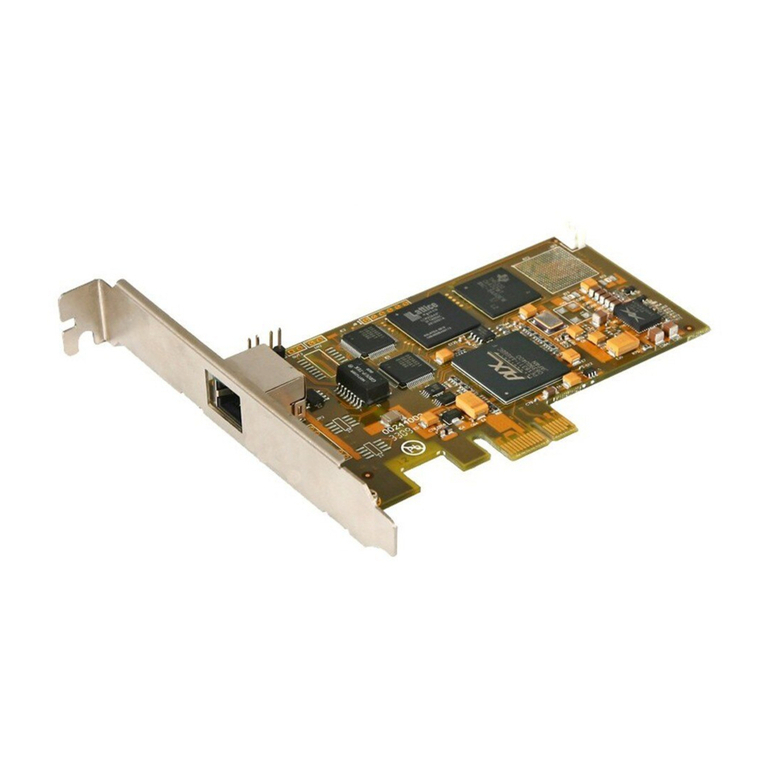
Synway Information Engineering Co., Ltd
safety. Users can apply to our company for the authorization code
zCompatible with other series of voice boards from Synway
1.2 Features
zDMA Read and Write
Uses the DMA technology based on PCI bus to read and write data, greatly reducing
the CPU cost.
zE1/T1/J1 Support
Provides an easy selection of the E1, T1 or J1 trunk and its matching impedance via
software reconfiguration, not requiring any change in hardware.
zSignaling Interface
SS1 provides two levels of interfaces respectively for MFC transmission/receipt and
SS1 connection; SS7 provides two levels of interfaces respectively for MTP and
TUP/ISUP, meeting various customer requirements.
zSignaling Processing
Installed with loadable signaling processing modules, each board supports SS1, SS7
and ISDN, eliminating the need for extra signaling boards. The signaling processing
program can be upgraded via a simple software configuration, without having to
change the hardware.
zSignaling Links
Each board supports up to 8 signaling links and the signaling hot-backup feature, i.e.
the signaling can be processed by the standby server whenever something is wrong
with the links being used, which increases the flexibility and reliability in a great
extent. All the timeslots ranging from 1 to 31, not only TS16, can be used for SS7 and
ISDN signalings.
zProgrammable Tone Detector
Detects single or dual tones at any frequency, offering facility for use with a variety of
PBXes and key telephone systems.
zSoftware-based Terminal Matching
A single board supports several kinds of trunks which differ in impedance. They are
100ΩT1, 110ΩJ1 and 120ΩE1 twisted-pair cables and 75ΩE1 coaxial cable. Both
transmit and receive terminals on the board are specified via software configurations,
facilitating easy connections to a variety of digital trunks and optical transceivers.
zSpecialized Driver Algorithm
Synway SSW Series E-type Digital Trunk Boards Hardware Manual (Version 1.1) Page 2


































